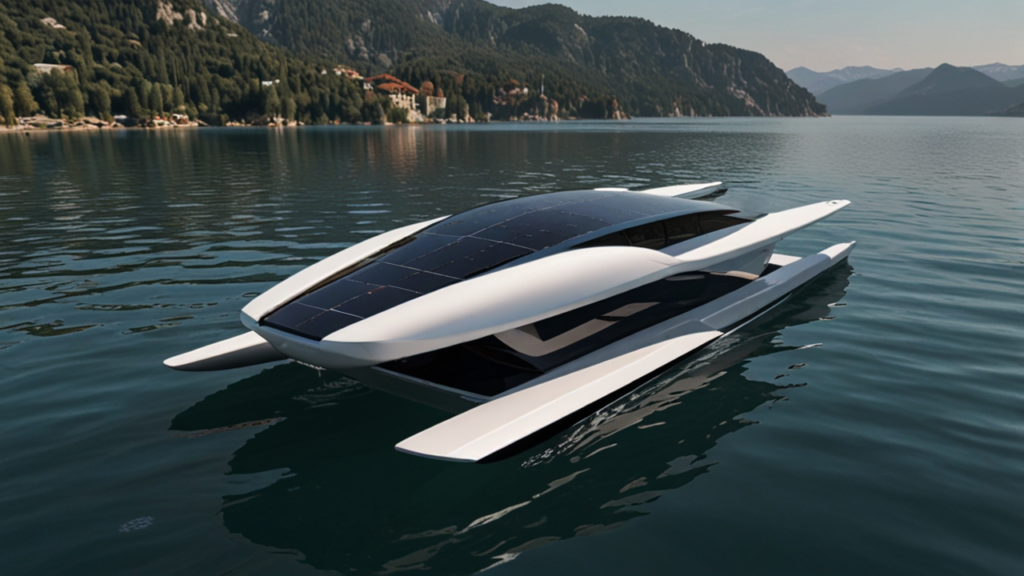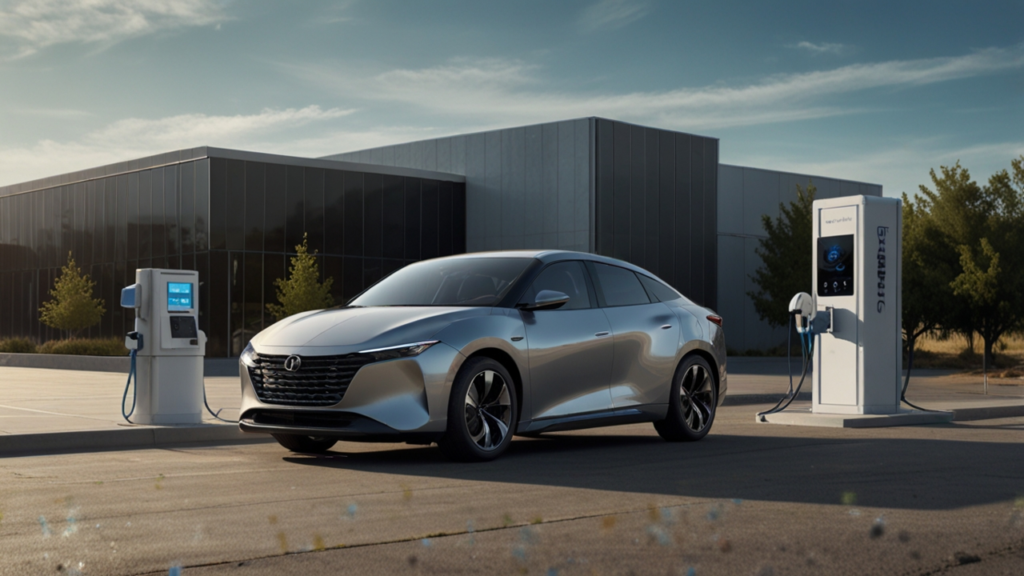Air Taxi Revolution 2025
Welcome to our in‐depth analysis of the evolving world of air taxis. In this article, we explore the technological breakthroughs, historical evolution, and future trends that shape the modern aerial transportation landscape. Whether you are a curious beginner or a seasoned industry observer, this piece offers insights for everyone.
Our discussion touches on the emergence of urban mobility solutions, the transformation of traditional flight into modern air taxi systems, and the integration of disruptive technologies. For more information on emerging mobility trends, explore Future Mobility.
Dive into the journey from early concepts to today’s dynamic prototypes that set the stage for next-generation passenger travel. We invite you to reflect on each section and share your thoughts as you read along.
Table of Contents
Introduction to Air Taxi
Fundamentals of Air Taxi
The concept of an Air Taxi emerged as an innovative solution to urban congestion and long travel times. Short, efficient flights are designed to merge the benefits of traditional aviation with advanced on-demand services. These systems integrate cutting-edge technology into compact aerial vehicles that can operate with minimal noise and reduced emissions.
Air taxis are being developed with a focus on safety, efficiency, and accessibility. They build on decades of aerospace engineering, drawing inspiration from early VTOL designs and contemporary electric propulsion systems. The industry is now witnessing a transformation where high-tech prototypes are tested for real-world applications.
Innovators are leveraging advancements such as distributed electric propulsion and smart avionics to revolutionize urban transportation. This approach allows for rapid acceleration and quieter operations compared to conventional helicopters. How might these advanced systems influence your daily commute?
For further insights, check out the latest trends in Emerging Transportation Technologies.
Benefits and Innovations
The advantages of air taxis extend beyond speedy travel and reduced urban congestion. By using electric propulsion, these vehicles contribute to lower carbon emissions and create safer, quieter urban skies. The integration of autonomous systems enhances safety while improving fleet efficiency.
Air taxi innovation signals the beginning of a new transportation era. Enhanced battery life, streamlined design, and innovative flight controls are making it increasingly viable for both urban and regional travel. These advancements have been propelled by significant investments from global aerospace giants and promising startups.
In addition, air taxis help reduce travel time dramatically compared to ground-based alternatives. Their development supports a greener future through lower operational costs and decreased noise pollution. What positive changes do you foresee as air taxis become more prevalent?
Evolution and History of Air Taxi
Early Beginnings and Aircraft Design
The evolution of air taxis is deeply rooted in early 20th-century dreams of flying cars and vertical takeoff systems. Early pioneers explored the concept through experimental prototypes, even though traditional helicopters dominated the early development. However, helicopters were often plagued by high costs, noise, and complexity.
Innovators built upon this base by experimenting with VTOL (vertical take-off and landing) technology. The dream of combining the convenience of a taxi with the freedom of flight laid the groundwork for future prototypes. These early designs provided a glimpse into what would eventually become a transformative field.
In many ways, these original prototypes influenced modern research and engineering efforts. Technologies such as distributed electric propulsion and multicopter designs trace their lineage back to these initial experiments. What lessons from these pioneering days do you think remain relevant today?
For an expanded view on early aviation experiments, visit Smart Mobility.
2000s Breakthrough and UAM Emergence
The early 2000s marked a decisive breakthrough in air taxi technology, with companies like Terrafugia and EHang unveiling the first electric VTOL prototypes. These vehicles served as proof-of-concept designs that demonstrated the feasibility of urban aerial mobility. Notably, NASA’s 2009 Puffin project popularized ideas such as distributed electric propulsion.
During this period, advancements in battery technology and autonomous flight control systems accelerated development. Increasing investments from aerospace giants and an influx of startup innovation helped shape the future of urban air mobility. The term “Urban Air Mobility” was coined to highlight the unique transportation model now emerging.
This evolution has led to vital changes including safer, quieter vehicles with improved performance. As these projects move toward certification and commercialization, the journey is filled with learning opportunities. How do you envision the breakthrough phase affecting future travel regimes?
Further reading is available at Smart Mobility.
How Urban Flight Enhances Air Taxi
Integration of Urban Flight Technologies
The integration of urban flight technologies plays a crucial role in advancing air taxi systems. These systems leverage autonomous flight controls and advanced sensors to safely navigate busy city airspace. The incorporation of smart tools has enabled more efficient routing and scheduling of flights.
Urban flight demands that vehicles be compact, agile, and robust enough to handle rapid changes in city environments. Engineers are developing software and hardware that support seamless integration into current transportation networks. This intricate blend of technology has created platforms that can adapt to urban challenges.
For example, advanced autopilot systems and AI-powered flight controls ensure safe operations in crowded skies. These systems not only boost reliability but also pave the way for future autonomous commercial flights. Have you ever wondered how city infrastructure could adapt to support such innovative travel solutions?
Learn more about the potential of modern transit by visiting Electric Vehicles.
Impact on Urban Transportation Systems
Urban flight technologies significantly impact urban transportation by offering faster routes and alleviating ground traffic congestion. These vehicles complement existing public transport systems by providing rapid door-to-door service within dense city regions. Their integration is pivotal in reducing commute times significantly.
The synchronization between air taxi operations and traditional transit networks is evolving. Urban planners are starting to develop dedicated landing zones and advanced air traffic control features. This harmonization ensures that integration is smooth, efficient, and safe for passengers.
The ongoing transformation signifies an era where aerial travel and ground systems work cooperatively. This enables smoother, more reliable urban transportation, setting new standards for travel efficiency. How might your routine commute change with these innovations in play?
For additional insights on innovative transport methods, check out Electric Vehicles.
Electric VTOL Systems and Their Applications
Powering the Future with Electric Propulsion
Electric VTOL (Vertical Takeoff and Landing) systems are at the heart of the air taxi revolution. These vehicles utilize rechargeable batteries to power multiple electric motors. The result is a quiet, efficient, and environmentally sustainable flight experience.
Developers focus on improving battery energy density and reducing charging times. Constant improvements in battery performance have enabled these systems to achieve ranges of 25 to 100 miles per charge. These innovations are making the technology a viable option for both urban and regional travel.
Moreover, electric propulsion systems generate significantly fewer emissions than traditional combustion engines. As a result, cities can enjoy cleaner air and reduced noise pollution. What do you think is the most exciting aspect of moving towards electric propulsion?
For further technical details, visit Green Technology.
Real-World Applications of VTOL Systems
Electric VTOL systems have begun to demonstrate real-world applications that extend beyond simple passenger transport. They are used as air ambulances, cargo drones, and experimental urban shuttles. This versatility shows the profound impact these innovations could have across various sectors.
Companies are collaborating with established airlines and regulatory bodies to ensure these systems meet stringent safety standards. Flight tests and certification processes are progressing steadily, paving the way for routine commercial operations. The shift from experimental prototypes to certified flight is a critical milestone.
The potential for these systems to revolutionize on-demand urban travel is immense. They offer a dynamic alternative to ground transportation that is both efficient and eco-friendly. Could you see yourself relying on these systems for daily commuting?
For more technical background, check out Green Technology.
Real-World Case Studies of Air Taxi
Case Study: Volocopter and Joby Aviation
Real-world examples of air taxi innovation include noteworthy achievements by Volocopter and Joby Aviation. Volocopter, a German startup, has demonstrated successful public test flights and is on track to receive EASA certification. Their VoloCity air taxi is expected to operate in major cities like Paris and Singapore.
Meanwhile, Joby Aviation—a US-based company—has partnered with United Airlines and acquired Uber Air, testing prototypes capable of 150+ mile ranges. Their ongoing efforts include refining tilt-wing designs that maximize both speed and range. These projects are major milestones for establishing air taxi credibility.
Both companies illustrate how advanced engineering, rigorous safety testing, and strategic collaborations contribute to the field’s growth. Their successes underscore the importance of continuous innovation and regulatory cooperation. Do these breakthroughs inspire confidence in the future of urban air mobility?
For extended insights, see Future Transport Solutions.
Case Study: Wisk Aero and EHang
Wisk Aero and EHang present additional compelling case studies in the air taxi sector. Wisk Aero, supported by Boeing, has logged over 1,600 autonomous test flights and is pioneering the world’s first autonomous, all-electric, four-seat air taxi. Their focus lies in seamless autonomous operation and stringent FAA certification protocols.
EHang, a prominent Chinese company, has conducted more than 10,000 test flights and passenger demos across various cities as it nears commercial deployment. These extensive tests have proven critical in refining their operational safety and flight control systems. The market readiness of these projects signals an imminent shift toward everyday autonomous transit.
Both companies are leveraging advanced technologies to overcome technical and regulatory challenges. Their achievements reflect the broader potential for near-future commercial operations in urban skies. What key innovations do you think will drive the next phase of growth in this industry?
For additional context, explore resources like Volocopter Solutions.
Comprehensive Comparison of Case Studies
| Company | Key Achievement | Flight Range / Tests | Region |
|---|---|---|---|
| Volocopter | Public test flights; VoloCity development | N/A | Europe |
| Joby Aviation | 150+ mile range prototype; airline partnership | 150+ miles | USA |
| Wisk Aero | 1,600+ autonomous test flights; autonomous taxi | Varies | USA/New Zealand |
| EHang | 10,000+ test flights; passenger demos | N/A | China |
| SkyDrive | Demo flights; Expo 2025 plans | N/A | Japan |
These case studies demonstrate how different technological approaches offer varied solutions to urban transit challenges. With each story, the future of aerial travel becomes clearer and more promising. How do these innovations resonate with your travel needs?
Aerial Mobility in Modern Air Taxi Solutions
Fleet Management and Urban Integration
Modern aerial mobility solutions emphasize efficient fleet management and seamless integration with urban infrastructure. Operators are deploying advanced cloud-based platforms to monitor flight schedules, maintenance needs, and real-time traffic patterns. These systems ensure that each vehicle performs at its optimum level.
Efficient fleet management includes the use of AI-driven algorithms to optimize route planning and minimize energy consumption. Urban integration is achieved through dedicated vertiports and multi-modal transportation networks that allow smooth passenger transitions. This integration directly enhances user convenience and operational reliability.
Additionally, data analytics and remote diagnostics play a crucial role in maintaining fleet safety. By integrating refined traffic management systems and sensor technologies, operators are better equipped to handle complex urban airspace challenges. How would such improvements in city logistics impact your travel experience?
For more in-depth discussion, see Future Transport Solutions.
Autonomous and Smart Flight Systems
Emerging autonomous and smart flight systems represent a significant leap in aerial mobility. These systems incorporate robust AI algorithms and sensor technologies that empower vehicles to perform self-diagnosis and real-time decision making. As a result, autonomous air taxis are becoming increasingly safe and efficient.
Developers are investing in machine learning and advanced automation to reduce human error and boost reliability across complex urban environments. Smart systems continuously collect and analyze data to adjust flight paths in response to dynamic conditions. These real-time adjustments are fundamental to enhancing overall route efficiency.
This technological leap creates new opportunities for daily urban commuting. When combined with improved regulatory frameworks, these autonomous systems promise a future where air taxi operations are routine and highly efficient. What impact do you think advanced automation will have on your future travel?
To learn more about smart innovations, consider insights from eVTOL Wikipedia.
Future Trends: Passenger Drone and Beyond
Forecasting Market Growth and Innovation
Looking ahead, the industry is forecasted to see robust market growth, reaching tens of billions of dollars by 2030. Analysts predict that hundreds of thousands of flights could be integrated into urban air mobility systems annually. As investments increase, the technological advancements are expected to further enhance safety and efficiency.
Key growth drivers include improvements in battery technology, increased automation, and expanding regulatory support. This optimistic projection is based on current trends observed in public test flights and consistent funding from both government and private sectors. The global trajectory points toward an era of abundant customer choice and unprecedented innovation.
Market growth is also supported by pioneering research, detailed in industry articles and expert studies. What do you think is the most critical factor that could drive the rapid expansion of these services?
For technical insights, check out Wisk Aero Video.
Overcoming Challenges for Passenger Operation
Even as the industry evolves, several challenges remain that must be overcome before fully scalable passenger operations are possible. Certification processes, battery limitations, and urban airspace management are significant hurdles. However, ongoing research and regulatory efforts continue to address these issues.
Collaborations between aerospace companies and government agencies are crucial in devising solutions that ensure safety and reliability. Continuous improvement in autonomous controls and sensor technologies further solidify confidence in these future systems. Clear demonstration of safety and consistent performance is key to widespread commercial adoption.
The journey from prototype to established service involves overcoming both technical and public acceptance barriers. As these challenges are met with creative solutions, the promise of daily aerial commuting becomes more tangible. What strategies do you think will be most effective in managing these risks?
For additional perspectives, refer to Electric Air Taxis Article.
Design Beyond Boundaries
Innovation is not confined to technology alone; it is also about the creative spirit behind problem-solving. In this section, we explore the art of creative problem-solving and the concept of design thinking that transcends conventional approaches. The process draws inspiration from diverse fields such as architecture, art, and psychology.
Imagine a scenario where challenges are met with innovative ideas that break away from standard practices. Creative problem-solving encourages interdisciplinary collaboration and opens up multiple avenues for thinking differently. By prioritizing empathy and experimentation, designers are able to develop solutions that are both practical and visionary.
This approach involves brainstorming sessions, prototyping, and a willingness to embrace failure as a necessary step towards success. It emphasizes the importance of listening to end-user experiences and iterating designs based on real-world feedback. Such methodologies empower teams to build resilient systems that redefine the boundaries of possibility.
Historically, many breakthrough innovations have emerged not from linear thinking but from the interplay of creative insights from various domains. This process challenges traditional perceptions of constraints and encourages a mindset that is both adaptable and inventive. The result is a unique synergy between imagination and technology that elevates every project to new heights.
Ultimately, this spirit of innovation inspires a deeper appreciation for the iterative process of problem-solving. It highlights that the path to transformation is not a straight line but a mosaic of diverse ideas and collaborative efforts. In embracing this philosophy, you contribute to a future where creativity and ingenuity lead the way.
FAQ
What is an air taxi?
An air taxi is a small aircraft designed for on-demand urban and regional travel, using advanced technologies like VTOL for vertical takeoff and landing. It provides a faster alternative to conventional ground transportation.
How did air taxi technology evolve?
The technology evolved from early 20th-century flying car concepts and helicopter adaptations to modern electric VTOL prototypes developed in the 2000s, powered by advances in battery and autonomous flight systems.
What challenges do air taxis face?
Key challenges include battery limitations, certification and safety requirements, and integrating air taxis into crowded urban airspace. Continuous technological improvements and regulatory collaboration are addressing these hurdles.
What are the benefits of using air taxis?
Air taxis offer reduced commute times, lower emissions through electric propulsion, and efficient urban mobility by bypassing congested roads, while also supporting advancements in autonomous flight systems.
How soon will commercial air taxi services be available?
Although extensive testing and certification are underway, fully commercial air taxi services are projected to begin emerging in the next few years as regulatory frameworks and technological maturity improve.
Conclusion
The air taxi revolution is reshaping the future of urban transport with innovative engineering and disruptive technologies. This transformative journey spans from early flight concepts to cutting-edge designs that promise faster, cleaner, and more efficient travel. As you’ve seen, the field is marked by vigorous development, strategic collaboration, and unwavering commitment to safety.
Modern systems—powered by electric VTOL technology and autonomous flight controls—hold the potential to redefine our daily commutes and reduce environmental impacts. Although challenges remain, continuous advancements and regulatory support pave the way for the safe integration of these services into everyday life.
We invite you to share your thoughts, questions, and experiences with this groundbreaking transformation. Have you experienced something similar or are you excited for the future of urban travel? For more information and updates on this transformative sector, please feel free to Contact.
Discover more from Fabelo.io
Subscribe to get the latest posts sent to your email.



